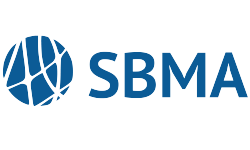The Unwinding of the Medicaid Continuous Enrollment Provision: What You Need to Know
The unwinding of the Medicaid continuous enrollment provision marks a significant change in the Medicaid landscape in the United States. As states regain the ability to initiate disenrollments, it is important to understand the key aspects of this process. From potential coverage losses to addressing eligibility and awareness issues, various factors play a crucial role in navigating the unwinding of the continuous enrollment provision.
By exploring these nine key things to know, we can better comprehend the unwinding of the Medicaid continuous enrollment provision and work towards maintaining accessible and equitable healthcare coverage for all individuals.
Unwinding Process
The unwinding of the Medicaid continuous enrollment provision began on March 31, 2023, allowing states to resume Medicaid disenrollments. This marked a significant shift in the Medicaid enrollment process, as states regained the ability to initiate disenrollments.
However, it is important to note that states must adhere to specific rules to qualify for the phased reduction in enhanced federal Medicaid matching funds. These rules include not restricting eligibility standards, methodologies, and procedures, as well as refraining from increasing premiums as required under the FFCRA. By following these guidelines, states can ensure a smooth transition during the unwinding process.
Potential Coverage Losses
Estimates suggest that between 8 million and 24 million individuals may be disenrolled during the 12-month unwinding period, leading to a potential decline in enrollment between 8% and 28%. The scope of potential coverage losses highlights the significant impact of the unwinding of the continuous enrollment provision. Approximately 17 million people could lose their Medicaid coverage if enrollment decreases by 18%. These figures underscore the need to closely monitor the unwinding process and implement strategies to mitigate coverage losses.
Eligibility and Awareness
Many individuals who may be disenrolled during the unwinding period are still eligible for Medicaid. Survey findings indicate that a significant number of enrollees are unaware of the need to renew their coverage. This lack of awareness poses a challenge as eligible individuals may unintentionally lose their Medicaid coverage.
Enrollees report no change in income or circumstances that would make them ineligible for Medicaid, highlighting the potential disconnect between their eligibility and their knowledge of the unwinding process. It is crucial to address this gap in awareness and ensure that eligible individuals are well-informed about the renewal requirements to retain their coverage.
Disenrollment Risks
Certain groups that experienced substantial growth under the continuous enrollment provision, such as ACA expansion adults, other adults, and children, are expected to witness the largest declines in enrollment. These groups, which have benefited significantly from the continuous enrollment provision, are now at risk of losing their Medicaid coverage.
It is important to address the disenrollment risks faced by these vulnerable populations and implement targeted strategies to assist eligible individuals in retaining coverage. Conducting outreach programs, providing education, and offering enrollment assistance will be crucial in ensuring that those who remain eligible for Medicaid can navigate the unwinding process and retain their coverage.
Engaging Community Health Centers and Assister Programs
Community health centers and assister programs are crucial stakeholders in supporting Medicaid enrollees throughout the unwinding process. These organizations can provide valuable information and assistance to enrollees, helping them navigate the renewal process and understand their coverage options.
Community health centers and assister programs can assist individuals in updating their contact information, completing the necessary documentation, and transitioning to alternative coverage options if they are no longer eligible for Medicaid. Their involvement is essential in ensuring that individuals receive the necessary support and guidance during this transitional phase.
Timely Data and Reporting
States are required to provide baseline data and monthly reports to monitor the unwinding process effectively. These reports serve as essential tools for tracking various metrics related to renewals, disenrollments, and pending renewals. By analyzing this data, states can gain valuable insights into the progress of the unwinding process and identify any potential challenges or disparities. Timely and accurate reporting enables policymakers and stakeholders to make informed decisions and develop targeted interventions to address emerging issues.
State Approaches
States have adopted different strategies for handling the unwinding process, reflecting the diverse landscape of Medicaid programs across the country. The variation in disenrollment rates among states that have already resumed disenrollments highlights the importance of understanding and analyzing state-specific approaches.
Monthly reports provide a comprehensive overview of state efforts and enable policymakers to evaluate the impact of different strategies. By studying these variations, states can learn from one another’s experiences and identify best practices to optimize their own unwinding processes.
Addressing Operational Challenges
The unwinding of the continuous enrollment provision presents operational challenges for states, including staffing shortages and outdated systems. To address these challenges, CMS has provided temporary waivers that allow states to simplify the renewal process for select enrollees.
These waivers offer flexibility in streamlining administrative tasks, reducing bureaucratic hurdles, and minimizing procedural terminations. By leveraging these waivers, states can optimize their operational processes and ensure a more efficient unwinding process.
Increase in Uninsured Individuals
The termination of the continuous enrollment provision raises concerns about an increase in the uninsured population. Efforts should focus on simplifying the transition to alternative coverage options and reducing barriers that may prevent individuals from accessing healthcare. It is crucial to implement strategies that facilitate smooth transitions for individuals who are no longer eligible for Medicaid, ensuring they have access to other sources of coverage, such as ACA marketplaces or other programs.
By addressing the potential increase in uninsured individuals, policymakers can work towards maintaining affordable and accessible healthcare for all.
Final Notes
The unwinding of the Medicaid continuous enrollment provision brings significant changes to Medicaid enrollment and coverage. It is crucial for states to address potential coverage losses, support eligible individuals in maintaining their healthcare coverage, and ensure a smooth transition for those no longer eligible. Partnering with community health centers, and assister programs, along with timely data and reporting, are essential for effective monitoring of the unwinding process. Ultimately, the goal is to mitigate the increase in uninsured individuals by simplifying transitions and ensuring equitable access to healthcare for all.
Any Questions?
We are in the business of providing healthcare to everyday people, ensuring peace of mind through trust and transparency.
Our customer service is what sets us apart. We work when you work. Our carrier partners have given us exclusive offerings to complement our medical plans, giving you the best possible price. Our speed of implementation and innovative approach to benefit coverage is second to none.
Learn more about us and our services, here.



